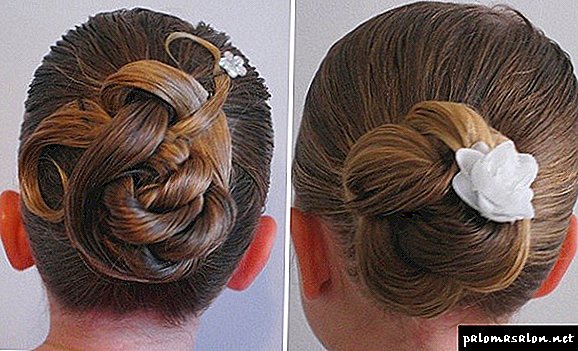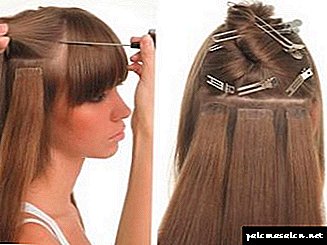What is known about male pattern baldness is true, how to deal with this ailment and prevent its occurrence.
Many men sooner or later begin to worry baldness, or alopecia, as doctors call this condition. Yes, it is doctors. The trichologist is dealing with the problem of alopecia, and if you contact him in time, the balding process can be slowed down or completely stopped. But it is possible only in the early stages. Most often, the occurrence of baldness is due to genetic predisposition, but in general the mechanism of the occurrence of this condition is still poorly studied, and the reasons may be different (there is alopecia, by the way, not only in men but also in women). Perhaps it is precisely the fact that this anomalous state is still poorly understood, and led to the emergence of many myths about alopecia. Let's look at some of them. Do they have a grain of truth?
- Baldness occurs in adulthood
This is not true, because most balding men hair loss begins quite early: in 20-30 years. But this is a long process, and therefore the result is not immediately noticeable. However, the sooner the hair began to fall out, the bigger the loss will be. Therefore, it is precisely in his youth that one must be especially attentive to the condition of the hair and immediately contact a trichologist at the first signs of baldness.
- Tendency to baldness is transmitted through the maternal line
And this is not true. The tendency to baldness can be obtained from any of the parents, just scientists have previously identified the gene responsible for this tendency, on the X chromosome transmitted to the son from the mother. This was done in 2005. And only three years later, a similar gene was discovered in the hereditary material that the child receives on the paternal side. But the myth has already spread.
- Frequent haircut improves hair condition
This myth was born due to the fact that men see: frequent shaving causes facial hair to become thicker and tougher. But, alas, this feature does not apply to the scalp. In some cases it is easier for weak bulbs to keep short hair than long ones, but it is impossible to stop baldness with a haircut.
- Hair care products increase their loss
There is no evidence that hair care products contain substances that have a detrimental effect on hair follicles. Of course, we are talking about products of famous brands. Such firms usually carefully monitor the composition of each product, taking care of their safety, because their profit directly depends on it.
- UV exposure causes baldness
This is not the case; no link between excessive insolation and alopecia was found. But people who abuse their stay on the beach or in a solarium are really at risk, but not getting bald, but getting skin lesions and increasing the likelihood of developing malignant tumors. By the way, it is the scalp that usually suffers the least because it is covered with hair
- Hair follicles can be restored
Alas, it is not. Restore dead follicles of modern medicine can not. And because the only way to restore lost hair is the transplantation of hair follicles.
Stress can really provoke an increase in hair loss, because it aggravates various chronic diseases and pathologies. A deterioration of the hair condition may be a symptom of such exacerbations. But stress does not cause alopecia.
- The cause of baldness is testosterone level fluctuations.
A high level of testosterone really provokes baldness, but not all. What is important is not the concentration of testosterone in the blood, but the degree of sensitivity of the hair follicles to its decay products. And this factor is determined by the presence of a genetic predisposition.
- Wearing a hat is harmful to hair.
Everything is just the opposite: wearing a hat is useful for the preservation of hair, and in general for health. After all, it protects against aggressive environmental factors, such as direct sunlight, precipitation, temperature changes.
- Bad habits cause baldness
This is partly the case. Nicotine, alcohol and drugs cause intoxication of the body, which, among other things, has a depressing effect on the production of testosterone. Do not contribute to the increase in the level of male hormones and overeating, and a sedentary lifestyle. In addition, tobacco smoke contributes to poor hair health, and capillary circulation suffers because of nicotine and the nutrition of the hair follicles is reduced. But at the same time, not all men prone to bad habits go bald, so there is no direct connection with the development of alopecia. But to speed up the development of baldness, if it has already begun, bad habits can.
What makes baldness come about?
In fact, baldness can be triggered by many factors. Among these very factors, hereditary causes transmitted by genetics are more common. It turns out that the genetic characteristics of men are transmitted from mothers, despite the fact that the latter may not suffer from the problem of baldness, hormonal changes, especially if there are problems with the thyroid gland, stress, both on the physical and on the emotional level. By the way this item is explained simply. The thing is that when a stressful situation occurs, a spasm of blood vessels occurs, as a result of which the blood goes to the head poorly.



Hair bulbs have nothing to eat, which ultimately leads to hair loss.
Being overweight also affects baldness. Due to fat accumulation, the level of cholesterol in the blood increases, it clogs the greasy ducts on the head, causing the hair follicles to die off.
Why does baldness appear more often at the top of men?
For the reasons outlined above, one can understand why women do not go bald as often as men. Firstly, as it has already become known, a large role is played by the genetic background, which is displayed exclusively on male faces. Secondly, women are more intensely looking for excess weight and try to get rid of it than men. Thirdly, almost every man has bad habits, including alcohol or nicotine use. Women try to give up bad habits, and therefore they have fewer problems with their hair. Fourthly, stress plays a huge role! You did not notice that the majority of bald men among politicians, actors, businessmen? And all because their work involves a huge amount of stress and a kind of struggle, which in general affects the state of the body.
In addition, women constantly monitor their hair, nourishing them with a variety of masks and other methods.
Men are bald more often than women for the simple reason that they pay less attention to their health. And, perhaps, if they tried to change their point of view, they would have much less problems with their hair. Although, bald men very often attract women and are even considered more sexual.
What is total alopecia?
Doctors distinguish several varieties of alopecia, for example, nesting or focal, cicatricial or cicatricial. Total baldness is a severe form of focal alopecia. Small areas merge into larger ones, covering the head and body. Gradually, a person loses all hair.
Contrary to popular belief about the masculinity of the disease, neither women nor children are insured against total alopecia. Adolescents in puberty are at particular risk.
The first sign of complete baldness is the rapid loss of curls, not only on the head, but also on the eyebrows, eyelashes. A person begins to lose hair and on the body, the structure of the nail changes. Often, total alopecia is accompanied by failures of the immune system, the disease can be a symptom of thyroid inflammation, atopic dermatitis or polycystic ovary.
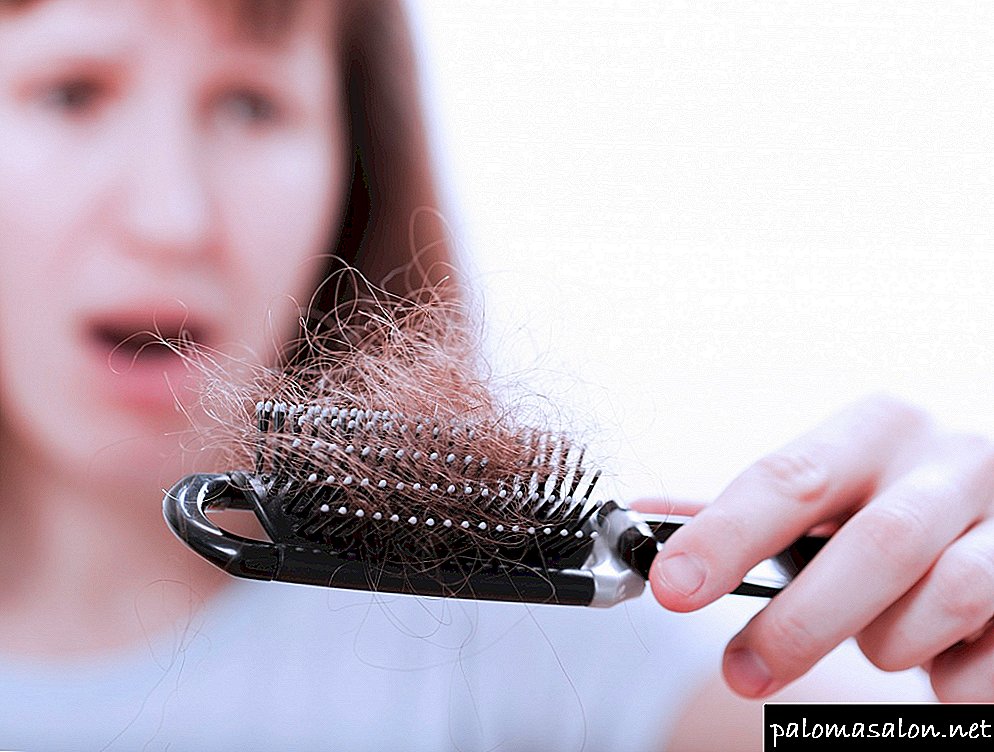
Causes of total alopecia
According to statistics, every thousandth inhabitant of the planet suffers from complete baldness. The human body is incredibly complex, and the causes of the disease there are a great many. Most often, total alopecia in men and women develops against the background of the following problems:
- Malfunctions of the hormonal system. The most common cause of total alopecia in women is the pathology of the thyroid gland, ovarian disease, the climatic period or pregnancy,
- Autoimmune diseases. When the immune system is impaired, its cells begin to attack the hair follicles, considering these elements to be alien,
- Congenital Underdevelopment of Follicles. The problem is noticeable in the first year of life of the baby. The child’s hair grows very weak, falls out quickly,
- Stress, nervous disorders. Strong experiences cause inhibition of microcirculation of blood around the bulbs, which also leads to rapid hair loss,
- Vitamin deficiency and protein restriction. Hard diets help not only lose weight, but also lose precious curls. When there is a failure in the absorption of vitamins, proteins and minerals, the nutrition of the hair shaft is automatically broken, which leads to loss of strands.
Radiation and toxic effects on the body, as well as infectious diseases (for example, syphilis, tuberculosis) can lead to complete baldness in women and men. Disease causes and reception of anticancer drugs, various mechanical and temperature effects on curls.
Dangerous and fungal diseases, such as dandruff. An unpleasant illness can lead to disastrous consequences, so when you find white flakes on the curls and clothes, think about how to quickly get rid of the problem.
ALERANA ® dandruff shampoo stimulates cellular metabolism in the follicles, eliminates desquamation and improves the nourishment of the curls, blocking the reproduction of the fungus that causes dandruff.
Features total alopecia in women
The most common cause of complete baldness in women is considered to be excessive production of male sex hormones (testosterone). Representatives of the beautiful half of humanity should be especially attentive to themselves with hormonal disorders, accompanied by androgenization.
However, do not panic. Total alopecia in women is cured several times more often than in men. The main thing is to choose a competent specialist and take prescribed drugs strictly by prescription.
Features total alopecia in children

Toddlers often suffer from balding at a very early age. If there is a congenital pathology, already in half a year there is a rare hair growth, thinning and breaking off the hair of the baby. Total alopecia can often be caused by a child’s allergies to certain drugs.
Although the problems with the child's hair and cause panic among parents, doctors advise not to rush to the treatment of baldness in baby. Very often, hair growth is resumed, the immune system cope with the illness itself, but hormonal drugs can have a bad effect on the child's weak body.
Diagnosis of total alopecia
In the course of the initial examination, the trichologist determines the degree of seriousness of the disease, interviews the patient about chronic and recently transferred diseases, and learns which drugs he takes. To determine the causes of alopecia, the doctor sends the patient for a laboratory examination, which includes the following types of tests:
- General and biochemical blood test,
- Hormone testing,
- Trichogram
- Immunogram
- Skin biopsy.
According to the results of analyzes, the trichologist assigns consultations to other doctors, for example, an endocrinologist, a gynecologist, a neurologist. Together, doctors prescribe appropriate treatment to the patient.
Treatment of total alopecia
Unfortunately, there has not yet been invented a single way to get rid of this extremely unpleasant problem. The main methods of treatment of complete baldness include:
- Immune correction. Adults are given glucocorticosteroids and immunomodulators, in severe cases, prednisol is administered intravenously,
- Impact on the central nervous system. Increasingly, the cause of total alopecia is stresses and nerve shocks. Yes, and the hair loss itself leads to significant unrest, which only aggravates the situation. Therefore, very often the doctor prescribes various nootropic drugs, antidepressants, as well as herbal sedatives,
- Treatment of diseases of the digestive tract. To improve the absorption of vitamins, proteins and microelements, it is necessary to cure all diseases of the gastrointestinal tract,
- Nutrition correction. For the growth and beauty of hair, more protein foods are introduced into the patient’s diet, as well as foods rich in zinc, iron, selenium. If necessary, the doctor prescribes and dietary supplements,
- Effects on follicles. Apply growth promoters, vasodilators. The patient is prescribed and irritating rubbing, for example, tincture of hot pepper, onion juice, mustard,
- Physiotherapy. A good addition to the treatment of total alopecia in men and women will be physiotherapy, for example, microcurrent therapy, iontophoresis, mesotherapy, vacuum or manual massage, darsonvalization,
- Transplantation. Surgical intervention involves transplanting follicles from the occipital to the temporal areas.
We have listed the main causes and methods of treatment for total alopecia. But still, you should not follow even the most balanced advice on the Internet, without consulting with the trichologist. Do not postpone the visit to the doctor, if you find a strong hair loss, check with the doctor! Remember, any ailment is curable if you take care of yourself in time. We wish you good health!
How to protect against gastrointestinal infections during the holidays?
A combination of antimicrobial and prebiotic will protect you and your family from unpleasant surprises on vacation.
How to protect against gastrointestinal infections during the holidays?
A combination of antimicrobial and prebiotic will protect you and your family from unpleasant surprises on vacation.
How to protect against gastrointestinal infections during the holidays?
A combination of antimicrobial and prebiotic will protect you and your family from unpleasant surprises on vacation.
When prostatitis and fibrosis go to the far plan
Russian scientists have developed a drug that can help with prostatitis, thanks to its complex mechanism of action.
When prostatitis and fibrosis go to the far plan
Russian scientists have developed a drug that can help with prostatitis, thanks to its complex mechanism of action.
Alopecia: it turns out women are balding 2 times more often than men
For hair restoration, our readers successfully use Minoxidil. Seeing the popularity of this tool, we decided to offer it to your attention.
Read more here ...
Men's baldness has always been considered a sign of the intelligentsia. However, women are not immune from hair loss. As practice shows, male pattern baldness in women is a fairly common phenomenon. In the language of medicine, this disease is called alopecia. Scientists have long calculated that a person, regardless of gender, loses up to 100 hairs per day. This is considered to be the norm, therefore, noticing that after laying on the comb there are a few hairs, you should not sound the alarm and make an appointment with a doctor.Another thing, when hair falls out strands, is an alarming symptom, which gives reason to visit the trichologist. In this article, we will tell you what to do when women have baldness.
It's time to think if a lot of hair remains on the comb after styling
- Reasons: why it happens
- Stages, symptoms and types of alopecia
- Folk remedies and methods of dealing with androgenic alopecia
- Treatment of alopecia areata in women
- Preparations against focal and diffuse alopecia
- How to prevent hormonal and total alopecia at home
Reasons: why it happens
Baldness in women, often caused by health problems. Any human body is like a complex and well-established machine. The slightest disruption of life, invariably manifested outwardly. In particular, problems with skin and hair begin. Here are the main causes of baldness in women:
- Problems with hormones. During pregnancy or breastfeeding, the female body experiences stress, which often leads to hormonal disruption. This leads to increased production of testosterone (male hormones), which leads to baldness.
Baldness negatively affects the appearance
- Unbalanced diet. To keep fit, women try various diets on themselves, without thinking that fasting or exclusion of certain foods from the diet will definitely affect their health.
- Stress. Constant nervous tension adversely affects the work of the vessels. As a result, the hair follicles do not receive enough nutrients.
- Medications. Alopecia in women is manifested as a result of regular use of potent drugs. Consider that antibiotics not only destroy disease causing bacteria, but also weaken the immune system.
Continuous care is required to maintain health in the hair.
- Wrong care. Use unsuitable hair care products or heat on curls. If you regularly use a hair dryer or heated hair rollers, then you are at risk.
Interesting! Treatment of baldness in women in most cases is successful. The process becomes reversible with timely access to a doctor.
Stages, symptoms and types of alopecia
Baldness in women does not appear immediately, so many women often do not attach importance to increased hair loss. The Ludwig scale is used to determine baldness. Here is how female alopecia manifests itself:
Progressive Alopecia in a Woman
- First, hair in the frontal and parietal areas begins to thin.
- The second stage is characterized by hair loss in these areas.
- The bald spot is clearly pronounced, while the hairs on the sides remain, but begin to thin.
Having found such characteristic signs in itself, it is recommended to immediately consult a doctor. Hair loss in women is successfully treated in the initial stages. There are several types of alopecia, they are classified as follows:
- Focal. Hair falls out in a specific area, rarely affecting other areas.
- Diffuse Loss of hair occurs evenly over the entire surface of the head.
Loss of strands does not depend on the hair color
- Androgenic. Hair gradually becomes thinner and starts to fall out. A characteristic feature of this type of alopecia is a clearly defined parting on the head.
Preparations against focal and diffuse alopecia
For example, if the causes of alopecia in women are rooted in hormonal failure, you must first restore balance in the body. Otherwise, any methods of treatment will be ineffective. Among the drugs prescribed by the doctor are the following drugs:
- Minoxidil.
- Nutrikap.
- Pantovigar.
- Merz (dragee).
- Vitrum Beauty.
It is worth noting that taking medications is recommended in combination with vitamin complexes. The method of mesotherapy is widely used to combat baldness. This is a subcutaneous administration to the patient of a medicinal cocktail. In some clinics, lost hair is restored by laser radiation.
Medicines with vitamin complexes are able to return a healthy look.
If we are talking about an advanced stage, when traditional methods of treatment do not bring the expected result, there remains a reliable and proven tool: hair transplantation. Healthy follicles are transplanted into the affected area from healthy areas of the body.
Important! Some ladies, having started a course of treatment, quickly refuse it, motivating their decision by the absence of a result. Remember that it usually takes about 6-7 months from the start of treatment to the appearance of a visible effect!
As an additional treatment, you can use a special shampoo. These funds are available without a prescription.
At the first symptoms of loss should consult a specialist
Please note that some shampoos contain harmful substances that can aggravate the situation with hair loss, so carefully read the composition of the selected funds. In particular, discard the shampoo, which contains SLS and sodium lauryl sulfate. To prevent hair loss will help funds based on lavender, tea tree or palmette. Among the names are:
Please note that some shampoos are not combined with drugs, so before buying, we recommend that you consult with your doctor.
How to prevent hormonal and total alopecia at home
Prevention is the best way to deal with any disease. Therefore, if you observe preventive measures, you can have a luxurious head of hair to a great age. We especially recommend you to think about prevention, if baldness has occurred among your close relatives. Bald headline is inherited - this is a scientifically proven fact!
- Change your lifestyle, stop smoking and alcohol, try to be more often in the fresh air. Try to reduce caffeine intake.
- If you have a genetic predisposition to baldness, we advise you to abandon the chemical perm and dyeing the head. If you want to change the hair color, purchase paint based on natural ingredients.
- Try to expose your hair to heat less often. Do not wash your hair with hot water or use a hairdryer unless absolutely necessary.
- Discard plastic and metal hairbrushes. Better use a wooden or bone comb.
These tips will help not only to avoid hair loss, but also to achieve a speedy recovery during treatment.
How difficult is it to cure cicatricial alopecia and what are the features of this disease?
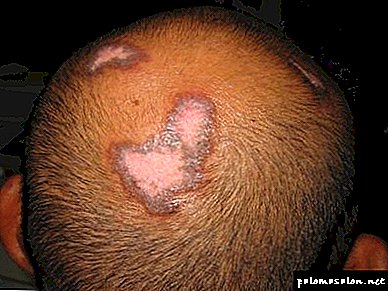
Baldness is an unpleasant problem that negatively affects a person’s appearance.
In this case, this phenomenon may have some form, stage of development of the disease.
For the appointment of a successful treatment of alopecia, it is necessary to establish the type of baldness, its intensity, as well as the causes that led to the occurrence of the problem. We will talk about this today.
- Brief description of the problem
- Who is at risk?
- Diagnostics
- Causes of illness
- Signs of cicatricial alopecia
- A photo
- Pathogenesis of the disease
- Treatment of cicatricial alopecia
- Useful video
Brief description of the problem
What is cicatricial alopecia? Cicatricial alopecia is a type of baldness that has certain differences from other forms of alopecia. The main difference is a very unfavorable course and prognosis of the disease.
The disease affects the hair follicles, which are gradually destroyed.

On the damaged areas of the scalp there are seals - scars consisting of connective tissue.
These seals overlap the hair follicles, as a result of which the follicle cannot perform its function, the hair stops growing.
This type of baldness is quite rare.
It is noted in about 3% of patients who went to the doctor with the problem of hair loss.
Diagnostics
At occurrence of characteristic symptoms it is necessary to see a doctor - trichologist. For diagnosis the doctor uses the following diagnostic methods:
- Skin biopsy from the damaged area. This method allows you to determine the state of the follicle, the presence of scar formation, to establish the cause that led to this phenomenon.
- Trichogram allows to detect the presence of inflammation on the scalp, to assess the condition of the hair shaft, the amount of hair in a certain area of the skin.
- In some cases, when it is not possible to identify the cause of the disease, a more extensive examination of the patient is required, which allows to identify a particular disease that could be the root cause of baldness.
Causes of illness
The causes of cicatricial alopecia are diverse and numerous. Often, this problem may indicate the presence of serious diseases, problems in the work of internal organs and systems.
Among the factors of cicatricial alopecia development include:
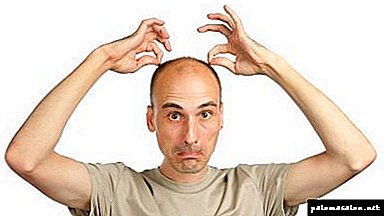
- Congenital causes. Due to the genetic predisposition of the skin of the scalp develop from the first days of a child's life.
- Infectious pathologies such as syphilis, tuberculosis.
- Oncological diseases (benign and malignant tumors), the use of chemotherapy and other methods of their treatment. Alopecia in this case does not always develop, it all depends on the intensity and duration of exposure to chemicals on the body.
- Mechanical damage to the scalp (burns, injuries, frostbite).
- Pathology autoimmune character.
- Diseases of the scalp (eg, lichen).
Signs of cicatricial alopecia
Clinical manifestations of the disease, regardless of the cause of its occurrence, are as follows:
- The appearance on the scalp of the delineated areas of baldness, which at first are of minor size.
- Over time, these areas increase in size, become more visible.
- The patient complains of discomfort in the area of injury. He is itching, burning, painful sensations over time.
- In the affected areas of the skin, inflammatory reactions, redness, ulcers and sores occur, the skin becomes more dry and flaky. However, there are cases when such manifestations are not observed, the skin remains smooth without any signs of damage.
- After some time, the inflammatory reactions subside, the complete absence of hair is marked on the affected areas.
See what cicatricial alopecia looks like in the photo:
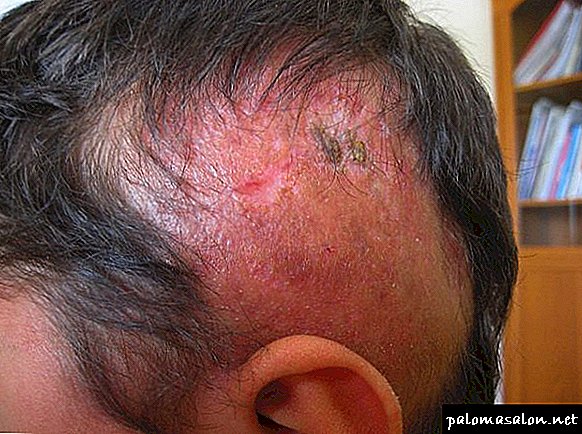
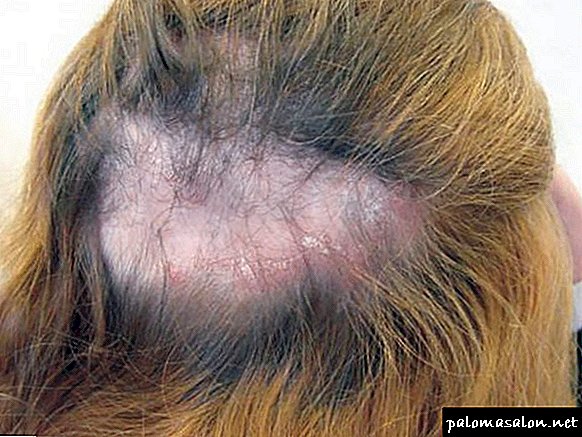
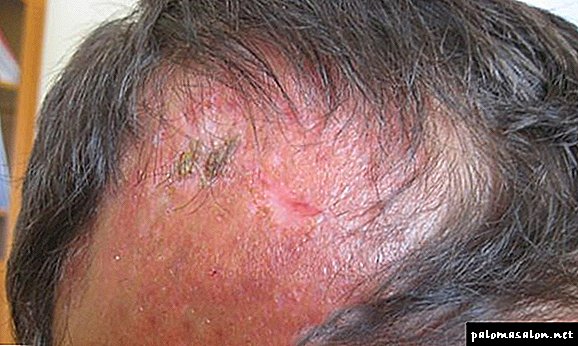
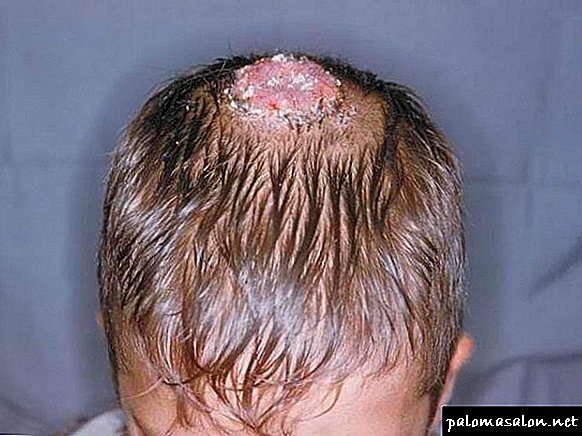
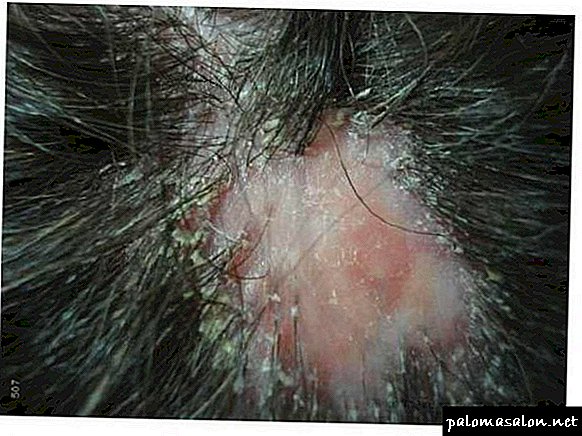
Pathogenesis of the disease
Cicatricial alopecia develops gradually, in the initial stages of the disease its symptoms may be minor, barely noticeable.
- At the first stage, damage to the upper layers of the skin due to the negative impact of damaging factors.
- Cells exposed to such exposure begin to secrete biologically active substances.
- Foci of inflammation appear on the skin, itching and a feeling of dry skin appear.
- In the damaged areas of the skin, the substance is actively synthesized - collagen, with the accumulation of which a scar of a reddish hue forms. Symptoms of the disease become irreversible.
- The scar becomes more pale, gradually hardens, thickens (this stage may have different duration: 1-3 months.)
- At the last stage, the hair follicles are destroyed, they atrophy, they cannot perform the functions of hair production. On the scalp, scars are transformed into hard scars, which can be seen not only to the touch, but also visually.
Treatment of cicatricial alopecia
The effectiveness of treatment depends primarily on the stage of the disease. At the initial stages of the development of baldness, it is possible to stop this process by eliminating the main reason for its development.
In this case, only surgery will help. This is a hair transplant using donor skin. For more information about modern methods of transplantation, including non-invasive methods and the price of this procedure, you can find on our website.
For hair restoration, our readers successfully use Minoxidil. Seeing the popularity of this tool, we decided to offer it to your attention.
Read more here ...

However, even here, the predictions are ambiguous: since the patient's skin is covered with scars, dense formations in which blood circulation is impaired, donor grafts may not settle down.
Cicatricial alopecia is one of the most serious types of baldness. With the disease of this species, there is destruction of the hair follicles, complete loss of hair in the affected areas.
Traditional methods are powerless here. Ointments and creams, medications do not give the expected effect. For successful treatment, surgery is necessary, and, of course, the elimination of the cause of the disease.
Causes of severe hair loss in women
Hair loss is a natural process that occurs with a person throughout life. Should I be afraid of him? Of course, no, especially if the number of hairs does not exceed the prescribed norms (50-100 pieces per day). This ratio makes the loss of strands hardly noticeable, but some factors can very quickly change plus to minus. Causes of hair loss can be very different, but we will try to consider them all.
1. Climate impact
A sharp change in temperature conditions extremely negatively affects the condition of our hair, and therefore hurry to abandon the curls, leveling irons and too hot hair dryer. It seems to many that thermal protection creams, lotions and sprays are an ideal means of protection, but, unfortunately, they do not save the situation. Do not forget about the external factors in the form of ultraviolet and winter frosts, which contribute to hair loss and damage.
2. Pregnancy and postpartum period
As a rule, the situation stabilizes after a year, when hormonal background and other processes normalize. If there is no improvement, seek medical attention as soon as possible. Here we can talk about an enlargement of the thyroid gland, which occurred after childbirth, or destabilization of the hormonal system.
3. Vitamin deficiency
Insufficient amount of trace elements, vitamins and other very useful substances affects both health and appearance.
Eat more fresh vegetables and fruits and do not forget about vitamin complexes.

4. Strict diet
You managed to lose weight dramatically and now you can not get enough of a new figure? And have you noticed the changes that have occurred with your hair? She probably became not so thick and silky. Of course, fat tissue produces most of the female hormones, the deficiency of which immediately affects the amount of hair. Moreover, along with the extra pounds, fat-soluble minerals and vitamins are gone from the body, without which hair growth is simply impossible.

5. Improper hair care and the presence of traumatic factors.
Shampoo that does not correspond to the type of hair, rare combing, long wearing of tight hairstyles, afro-braces and dreadlocks, frequent dyeing and perm - all this does not improve the condition of the strands.
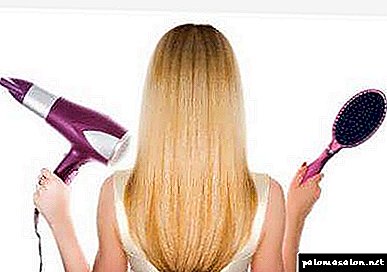
6. Stress, lack of sleep, mental overload, wrong day routine, long work at the computer - these are the most common causes of hair loss in women. We can not say that the hair begins to crumble immediately. The process takes place gradually, letting you know about the months through six chronic stress. In this case, it is necessary to eliminate the provoking factor as soon as possible and resort to effective therapeutic measures - hair massage and physiotherapy procedures.
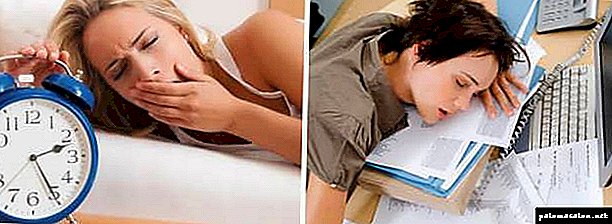
8. Wearing wigs and tight hats
Another provoking factor.They lead to overheating of the scalp and impaired blood circulation, as well as reduce the flow of oxygen. As a result, a huge amount of sebum begins to be released, which prevents the nutrition of the follicle. What do we have in the end? Bundles strands on the pillow.
We do not urge you to go in the winter without a hat, because hypothermia is fraught with a disease of the hair roots, which again will lead to large losses. Try to find a middle ground.
9. Health problems
Very often, the reasons for the loss of strands lie in the state of women's health. It does not help expensive masks, shampoos and other means. Visit your doctor and find the source of the problem.
What diseases can provoke the thinning of the hair?
- Problems in the gastrointestinal tract, including dysbiosis,
- Malfunctions in the endocrine system (diabetes mellitus, thyroid disease),
- Gynecological diseases. Polycystic ovary plays a special role in this process.
- The latter produce estrogens and are the main sex glands of women, and therefore any violation of their functions leads to severe hair loss.
- Head injuries
- Infectious skin diseases (dermatitis, seborrhea, ringworm, eczema, fungal versicolor).
10. Medicines
Side effect of drugs:
- Antibiotics

- Diuretic
- Birth control pills,
- Anticoagulants,
- Antineoplastic,
- Containing aspirin,
- Remedies for arthritis and gout,
- Neuroleptics,
- Antidepressants
- Reducing blood pressure.
11. Hereditary factor
12. Hormonal leaps caused by menopause, diseases or hormonal drugs.
13. Separately, it is necessary to allocate chemotherapy, which almost always leads to baldness.
14. Bad water and the environment in general.
15. The aging process.
16. Slow blood circulation, as a result of which the follicles do not receive the required dose of nutrients and stop growth.
If you want to improve the condition of your hair, special attention should be paid to shampoos that you use. A frightening figure - in 96% of popular brands of shampoos are components that poison our body. The main substances, due to which all the troubles, are labeled on the labels as sodium lauryl sulfate, sodium laureth sulfate, coco sulfate, PEG. These chemical components destroy the structure of the curls, the hair becomes brittle, lose elasticity and strength, the color fades. But the worst thing is that this stuff gets into the liver, heart, lungs, accumulates in the organs and can cause cancer. We advise you not to use the products in which this chemistry is located. Recently, the experts of our editorial office analyzed the sulfate-free shampoos, where the first place was taken by the funds from the company Mulsan Cosmetic. The only manufacturer of all-natural cosmetics. All products are manufactured under strict quality control and certification systems. We recommend visiting the official online store mulsan.ru. If you doubt the naturalness of your cosmetics, check the expiration date, it should not exceed one year of storage.
And what about men?
Causes of severe hair loss in women are often found among men. But even without purely masculine features, this was not done here, as representatives of the stronger sex are more prone to baldness due to the characteristics of their body. The fact is that a large amount of androgens and testosterone (male hormones) can lead to alopecia even at the age of 18 years.
The fact that men absolutely do not care about their hair, that they do not follow the general state of health, often eat harmful foods and smoke a lot should not be discounted. Add to this the hard physical labor, radiation exposure and harmful production .... The picture does not consist of pleasant ones, but it is in your hands to change it.
If the loss of the strands became a concern for you, do not waste precious time, but go to the hospital, determine the exact cause of the hair loss and start the appropriate treatment.
Men are bald five times more often than women.
Hair loss is one of the main causes of concern for the strong half of humanity. Bald men are five times more likely than women. Intensive hair loss begins, as a rule, in the frontal and parietal areas, risking to leave the owner in the past lush head of hair with an open top hair style. It goes to many men, but not everyone likes it. How to deal with trouble?
Why and how does a man grow bald
Alopecia (alopecia) is distinguished from ordinary everyday hair loss by the fact that a new one does not grow in the place of lost hair. The main cause of baldness (95% of cases) in men is hormonal status. Even Hippocrates and Aristotle pointed out that eunuchs do not become bald. In the 40s of the 20th century, science confirmed the opinions of the ancients, proving that the hormone testosterone, the level of which is most often inherited, under certain circumstances, is perceived by the hair follicle (bulb with adjacent glands) as toxic. Hair is gradually replaced by weak and short, eventually disappearing completely. Every second mature man over 40 complains of bald patches, but there is also an earlier hair loss - in 16% of young people from 18 to 30 years.
If you started to go bald and decided to stop this process, you need to consult a trichologist. Specialists in trichology - the science of hair and the hairy part of the scalp - are not uncommon in our time, and you can consult them at many medical centers. At the reception, the trichologist will diagnose the condition of the scalp with the help of a trichogram. During this procedure, special computer programs and digital trichoscans will determine the percentage ratio between the stages of hair growth. Normally, in a healthy person, 80-90% of the hairs are in the growth phase, and the shag becomes thinner if this stage becomes shorter. By comparing the amount of hair in different phases, it is possible to assess whether the chances of baldness are great.
After this, the trichologist will try to understand the causes of hair loss. It is certain that it turned out that a similar problem was or is with any of your male relatives. It is possible that poor nutrition, lack of vitamins (C, B5, B6, PP) and microelements (iron, calcium, zinc, magnesium, phosphorus), which are necessary for normal hair growth, have contributed to baldness. The harm of smoking and alcohol is not excluded. Take medication, and they could play a role. Trichologists note that hair loss is often associated with weather conditions and the environmental situation. Excessive low and high temperatures worsen blood circulation in the scalp, depriving the vegetation on the head of vital forces. Stress also plays a role.
After the trichologist finds out the extent and possible causes of alopecia, he can offer the patient different methods of dealing with the problem. If baldness has just begun, then you can try to crush the problem "in the bud" with the help of massage, balanced nutrition and cosmetics. Useful folk remedies: rubbing into the scalp of castor oil, burdock juice, rinsing infusion of nettle, the application of yogurt and clay masks. But this, from the medical point of view, is only support, not treatment. With genetics, "grandmothers" means you will not fight, and when the hair is very actively in a hurry to leave you, more serious therapy or even surgery is needed.
Doctors to fight wigs
For example, for balding men, special medications have been invented that can prolong the hair growth phase and stop the dying of their bulbs. Among the effective methods of stimulating the development of vegetation on the head in the clinic are physiotherapy procedures. A standard course of physiotherapy may include electrotherapy, drug electrophoresis at the balding site, ultrasound treatment, phototherapy, cryotherapy, heat therapy, massage, and vacuum therapy. Such procedures enhance blood circulation in the scalp, improve cell nutrition and accelerate the development of the hair follicle. Most often, physiotherapy is used in conjunction with medicinal treatment, but unfortunately, it is impossible to completely stop alopecia by such means.
Mesotherapy can increase the chances of success in combating baldness. Special medicinal substances are injected directly under the scalp - with the help of injections. Gaining popularity in trichology and ozone therapy. The head of a balding man is affected by ozone, a modified form of oxygen. This contributes to the enhancement of redox processes in the skin and the activation of the division of cells of the hair follicle. Ozone therapeutic effect can be a good addition to baldness treatment, but, alas, short-lived. Positive results persist for 5-7 months, after which trichologists recommend repeating the course of treatment.
So, all methods have been tried, hair is thinning less, but baldness continues to grow. In this case, you can resort to surgical methods to restore the hair. Among them, plastic surgery was once used in trichology to reduce baldness zones with the help of excision, grafting of skin grafts with hair, and transplantation of artificial hair. Now these methods are considered obsolete. They are fraught with inflammation, scars and tissue rejection. At the beginning of the XXI century, the most advanced technique - autotransplantation of their own hair. Invented during the Second World War for the correction of the scalp after burns, the transplantation of one's own hair at the moment is the most reliable and “long-playing” method of restoring beautiful hair. Under local anesthesia, a certain number of viable hair bulbs are transplanted from the donor area, for example, from the back of the head or temples, to the balding area of the patient. They are combined into several pieces in the so-called grafts, the required number of which is calculated using computer programs.
For a transplant procedure that lasts several hours, the patient needs to be patient. However, as a result, the man will be rewarded with a new head of hair for many years. The bald patches will begin to overgrow in 2 - 3 months, and the side effects after the transplantation by hands of highly qualified trichologists are practically impossible.
Interesting facts about alopecia
Researchers, studying such a mysterious disease as focal alopecia, established a number of interesting patterns:
- In 95% of balding men, the “culprit” is the male sex hormone dihydrosterone, which is found in excess,
- localization of foci of baldness is associated with coronary heart disease (CHD): it affects 54% of men balding in the crown, crown, and only 20% in the forehead, with both types of alopecia, ischemic heart disease diagnosed in 70% of men
- the physical parameters of balding men are superior to those with a head of hair: height is 2-3 cm higher, muscle mass is 13-15% more,
- balding men have more sexual energy
- finasteride, used for baldness, can cause impotence, but most men still do not refuse such treatment,
- the incidence of prostate cancer in balding men is 2 times higher than that of the "hairy".
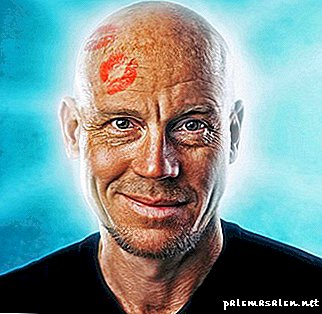
Balding men are believed to have greater sex appeal.
Such features of alopecia in men were revealed in a study by scientists in Japan and the United States.
Causes of hair loss
The disease is still not fully understood, the specific immediate causes of focal baldness have not been identified. Nevertheless, the dependence of its occurrence on the impact of the following factors:
- Genetic predisposition, which is equally often transmitted through both the male and the female line.
- Frequent stressful situations. A vicious circle develops here: stress provokes alopecia, and its appearance, in turn, increases stress. This leads to the progression of the disease.
- Transferred head injuries, ranging from minor cuts and bruises to head injuries. It is believed that the disease in this case develops reflexively, due to the incoming impulses from the source of damage.
- Transferred infections, including skin inflammatory diseases (fungal, bacterial).
- Immune system disorders: both its weakening and autoimmune reactions, the excessive formation of antibodies on its own tissues. This happens with collagenosis, allergies, psoriasis and other pathologies.
- Hormonal disorders in the body. In particular, in postmenopausal women, when there is a relative increase in the male hormones secreted by the adrenal glands.
- A deficiency in the body of vitamin D, which is synthesized by exposure to sunlight, and hence the lack of sun.
- Wrong choice of means to care for the scalp.
We recommend to pay attention also to the article: "Symptoms and treatment of alopecia in children."

Hair cosmetics cannot be acquired from the hands, you need to pick it up in specialized stores, pharmacies, where there is a guarantee and the assistance of a consultant
Clinical symptoms in men and women
The disease usually begins with the appearance of a small bald area on the scalp, which often goes unnoticed and often does not cause concern. After a while, it begins to increase, new foci appear, occupying an increasing area, often merging into one large hearth.
Focal alopecia in men occurs in a more severe form. The process begins with the crown, the hair quickly falls out, expanding the area of the lesion. On it a weak down can grow, or nothing at all. The skin becomes dry, thinned. The disease progresses rapidly.
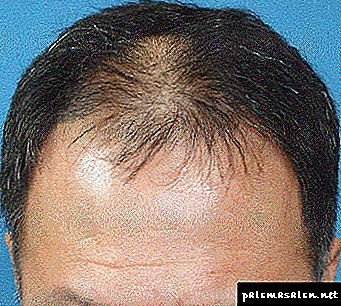
This is the beginning focal alopecia in men. The first foci appear in the forehead, crown
Focal alopecia in women takes place in a milder form due to the presence of estrogen (female hormones) in the body. Foci of thinning and hair loss appear on the scalp, mainly in the parietal region (on the crown), in the central parting and on both sides of it. This process takes a long time, for years. However, with the onset of postmenopause, when estrogens are no longer produced and androgens begin to dominate, the process of hair loss is significantly accelerated. This is the so-called androgenic alopecia in women.
With the progression of the disease, loss of eyebrows and eyelashes develops, and in 10% of patients the nail plates are affected. They lose luster, thin, appear longitudinal and transverse grooves.
Important! The appearance of foci of baldness on the head can be a manifestation of a fungal infection. Therefore, it is important to immediately consult a doctor for examination and selection of adequate treatment.
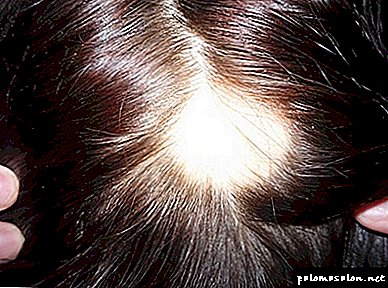
The first foci of alopecia in women appear in the parietal region
Treatment methods
It is a mistake to think that the treatment of alopecia areata is only in the use of external agents. This opinion is influenced by the abundant advertising of various miraculous sprays and ointments, which in the end turn out to be ineffective.
This disease has a complex pathogenesis, accompanied by a number of disorders in the body. Therefore, the treatment of focal alopecia, in addition to external means, includes measures of the overall impact on the body.
Systemic therapy
The objectives of general therapy are:
- immunity correction,
- stimulation of metabolic processes,
- replenishment of vitamin and mineral balance,
- normalization of function of the central nervous system, increased resistance to stress,
- elimination of foci of infection in the body,
- elimination of toxins, antihistamines,
- corticosteroids.
To stimulate the immune system, anthralin gives a good effect. In autoimmune reactions, cyclosporine and corticosteroid hormones are used to suppress the excessive formation of lymphocytes.
Powerful stimulators of metabolic processes are Actovegin, solcoseryl, made from the blood of animals, aloe extract, biotin, tactivin.
Vitamins A, B groups, nicotinic, ascorbic and folic acids, vitamin-mineral complexes are prescribed.

Injection biostimulants injections to stimulate immunity and regenerative processes in the treatment of alopecia
When the excitability of the nervous system shows sedatives, as well as normalizing sleep.
Treatment of existing inflammatory and infectious diseases - fungal, bacterial, viral.
To reduce the effects of toxins, antihistamines are shown, as well as neutralizing free radicals in the tissues (Resveratrol and analogues).
Important! Complex systemic therapy, drug options are selected only by a doctor after a preliminary examination of the patient.
For the treatment of focal alopecia in women, if it is androgenic in nature, hormonal preparations (contraceptives) are prescribed that suppress the production of male hormones by the adrenal glands. This therapy gives a good effect.
Treatment of focal alopecia in men is much more problematic. It is necessary to lower the level of hormones - testosterone, androsterone, dihydrotestosterone. Apply antiandrogens, reducing the production of sex hormones. This can cause a temporary decrease in sexual function, so a man should choose the lesser of two evils: a bald head with greater sexual opportunities, or a head of hair with a decrease in the intensity of intimate relationships. Practice shows that 60% of men choose the 2nd option.
Outdoor facilities
For both men and women, there is a large selection of external agents for the alopecia foci. All of them are stimulators of blood circulation and regenerative processes of skin cells and its appendages - hair follicles. This group includes irritating, burning agents (tincture of pepper, garlic, badyaga, Dithranol), growth stimulants (Antralin, Minoxidil, Solcoseryl ointment). Additionally, you can apply and folk remedies: burdock root, hair masks with onions, garlic, horsetail, masks of a mixture of honey, yolk, lemon, mustard.
Important! When choosing outdoor products, you should not trust questionable sprays and ointments, relying on "untwisted" advertising. Only a doctor can choose them optimally.
Physiotherapy
For the treatment of alopecia darsonvalization, ultraviolet radiation and PUVA therapy are used. The latter method is the most popular and effective. The skin is treated with photoactive substances (furocoumarins), then exposed to soft ultraviolet rays. Furocoumarins contribute to a greater accumulation of light energy, enhance its stimulating effect on metabolic processes in the skin.
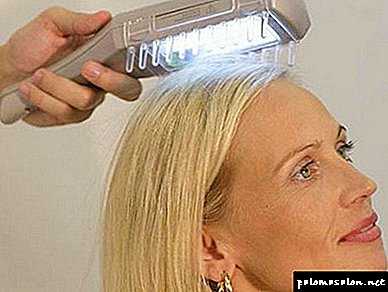
PUVA therapy for focal alopecia in women
Mesotherapy
This is an injection method where hair growth-promoting substances are injected directly around the center of alopecia (by chipping). Blends of vitamins, aloe extract, FIBS, Diprospan and others are introduced, their composition is selected individually.

Conducting injection mesotherapy for baldness
Hair transplantation
In severe cases, when conservative treatment is ineffective, use a surgical method - hair transplant. This is a delicate and painstaking operation that lasts for several hours. They take skin patches (grafts) with 2-3 hairs from the occipital region and implant them through small incisions in the alopecia lesions. Such grafts need a lot, often repeated operations are performed on their "podsazhivaniyu". Hair in the occipital region is insensitive to the effects of male hormones.
Prognosis and prevention
The prognosis for health is quite favorable, nesting baldness does not affect the state of the internal organs, except that it can cause nervous tension and stress. The forecast for the disease itself is not possible; it is unpredictable.
To prevent the occurrence of alopecia to a certain extent, you can, or at least slow its development. Preventive measures assume to carefully monitor health, balance nutrition, lead a healthy active lifestyle, choose the right hair care products and protect them from harmful effects.
Treatment of focal alopecia should be comprehensive, performed in accordance with the doctor's prescription after the examination. The success of treatment also depends on the lifestyle, nutrition, quality of hair care.
What is alopecia and who is prone to it
Baldness is a widespread problem, especially often representatives of a strong half of humanity face it. There are several varieties of alopecia, differing in their symptoms, etiology and peculiarities of the defeat of certain groups of individuals. Thus, the risk of developing androgenic alopecia increases in proportion to age (its first signs can be seen as early as 15–25 years old), but traumatic hair loss is more common in children.
In about 25% of cases, hair loss is caused by genetic factors. Alopecia often accompanies diseases such as vitiligo, Down syndrome, Addison's disease, various malfunctions of the thyroid gland. Can cause the development of this disease and adverse environmental factors, including radiation exposure.
Types of alopecia in women and men
There are several types of alopecia. It is classified depending on the shape of the flow and the causes. Based on the causal nature, alopecia is divided into the following several types.
Cicatricial. Occurs with mechanical damage to the hair follicles and the formation of scar tissue in their place. This baldness is 1-2% of all cases of baldness. It can occur after injuries and burns, as well as as a result of viral, bacterial or fungal lesions, accompanied by tissue inflammation and subsequent scarring.
Androgenic. The most common - more than 95% of hair loss in men and more than 20% in women are associated with this type of baldness. It is found in all ethnic groups, the peoples of the Caucasus are most susceptible to it, and the American Indians are the least affected. At the initial stage, men have thinning of the hair in the forehead and crown, and in women - thinning in the area of parting and on the lateral surfaces of the head. The main reason for this process is the negative impact on the follicles by the hormone dihydrotestosterone. It affects the cells of the follicles, as a result of which the hair becomes thinner, broken and discolored, and baldness is formed.
After about 10–15 years, the mouth of the follicles become covered with connective tissue and completely lose their ability to perform their functions. The increased sensitivity of follicles to dihydrotestosterone is due to genetic causes.
Hair loss in women is less pronounced than in men. The fair sex has 40% less androgenic receptors in the fronto-parietal zone and 6 times higher content of the aromatase enzyme, which turns dihydrotestosterone back into testosterone and estrogen.
Seborrheic. It is a consequence of seborrhea - a disease in which the secretion of the sebaceous glands increases. With prolonged seborrhea on the skin inflammation occurs, which provoke the development of seborrheic alopecia. This disease is most often found in puberty. In young men, it is manifested by loss of hair in the region of the crown and temples, and in girls - in the area of the forehead. In the root zone, fat scales are often present.
In 70% of cases, a change in diet will help to recover from seborrhea.
Symptomatic (telogen). This pathology arises due to disruptions in the functioning of body systems. She is in second place in frequency after androgenetic alopecia. It is more common in women than in men. In this form of the disease, the follicles lose their function. Pathology occurs as a result of stress, hormonal disorders, sexually transmitted diseases, surgical interventions, taking certain medications, as well as during pregnancy or an incomplete diet. Treatment involves eliminating the causes of baldness.
Toxic (Anagen). It occurs under the influence of radioactive radiation, strong poisons and chemotherapy. In this case, the hair begins to fall out in the growth phase. After the cessation of exposure to negative factors, the hairline is restored in a period of 3–9 months.
Natural. It is associated with the transition of the follicles to the resting phase. It is observed in representatives of both sexes, it differs by insignificance and short duration (lasts no more than 3-4 months), does not require treatment.
Depending on the form of the flow of alopecia is:
- focal (gnezdnoy)at which baldness occurs in certain areas, it is found in about 0.05–0.1% of the world's population, that is, in 2.25–4.5 million people. Of these, 30–60 thousand are British, and 112–224 thousand are residents of the United States. The main reason for the development of this pathology is autoimmune diseases,
- diffusecharacterized by a uniform hair loss over the entire surface of the head and resulting from the failure of the hair development cycles,
- total, which is an extreme form of the development of pathology, it represents the complete loss of hair on the head, and sometimes on other parts of the body.
According to some data, focal alopecia in women and in men occurs with the same frequency, and according to others - in the fair sex it is found twice as often. Women are more susceptible to autoimmune diseases, which are considered one of the main causes of baldness.
Causes of pathology
There are several main reasons for the development of alopecia. These include:
- Physiological changes in the body, caused by pregnancy and childbirth, medication, endocrine disorders, stress and nutritional factors (these factors contribute to the development of the telogen form of the disease).
- Radiation exposure, fungal mycosis, chemical poisoning, antineoplastic drugs (toxic form).
- Burns, injuries, infections, lichen planus and local acid exposure (cicatricial form).
- The impact of male sex hormones on the hair follicles. It can be caused genetically or triggered by hyperplasia of the pituitary or ovaries, polycystic ovaries, proliferation of the adrenal cortex, hormonal and steroid drugs.
- Hormonal restructuring of the body, increased levels of androgens in the blood, encephalitis, Parkinson's disease, schizophrenia, epilepsy, manic-depressive psychosis, prolonged use of anabolic steroids and hormonal drugs (seborrheic form).
In the process of examination by a specialist, it is extremely important to find the true cause of baldness, since it largely determines the further treatment strategy.
Diet therapy
In all forms of the disease, it is necessary to consume as many vegetables, fruits and products containing gelatin as possible. But the most important thing is to follow a diet with a seborrheic form of alopecia. The patient should stop drinking and irritating foods (pickles, coffee, smoked meats). You should also reduce the content of fats and carbohydrates in food.
Drug therapy and injections
Currently, only two drugs for the treatment of total and nesting alopecia are approved by the European Medical Agency: a means of local exposure Minoxidil (2%) and preparations for internal administration based on finasteride (recommended only for men). Therapy for all forms of baldness often involves the administration of psychotropic drugs and vitamin complexes. In case of the nest type of the disease, angioprotectors and agents that improve microcirculation in the tissues are also recommended (Trental).
In case of severe disease, hormone therapy may be performed. Corticosteroids are also prescribed to relieve inflammation. Drugs are taken orally or by injection. Treatment of androgenetic alopecia in women and men involves taking blockers of dihydrotestosterone and other antiandrogens.
In case of the nest type of pathology, local remedies that increase sensitivity to light (“Beroxan”) are effective. In case of ringworm, antifungal agents are recommended based on, for example, ketoconazole (the course of treatment is 6-8 weeks).
Cosmetics and Massage
Comprehensive topical preparations are widely used, in particular, Regein, as well as corticosteroid creams. Massage has a certain therapeutic effect, but only if it is performed regularly (for example, every evening). You can do it yourself (gently massage the affected areas with your fingers).
Traditional medicine
Sometimes an alternative medicine remedy is an aid in the treatment of alopecia - preparations developed on the basis of extracts of plants and natural compounds. This group includes alcohol tinctures (capsicum red pepper, Naftalan oil) and decoctions of medicinal herbs (chamomile, celandine, nettle, burdock, string).
A popular remedy is a decoction of calendula and coltsfoot or nettle (1–2 tablespoons of ground remedy must be boiled in 0.5 l of water for 20 minutes). Reduce the intensity of hair loss helps burdock oil, which must be rubbed into the scalp 30-35 minutes before washing.
PRP-therapy (plasma lifting)
This technique involves the allocation of growth factors from blood platelets, increasing their concentration per unit volume and the introduction into the skin of the scalp. This treatment contributes to the renewal and enhancement of hair growth, as well as the normalization of the sebaceous glands. This therapy can be used as an adjunct to drug or surgical treatment. In the second case, two sessions are carried out before and after the operation in order to increase the viability of the transplanted hair.
Where can I get a non-surgical hair transplant?
At present, seamless transplantation for focal alopecia is performed by specialists from many Russian centers specializing in the surgical treatment of baldness. The leading clinic of this profile is Hair For Ever, only here they use a combination of technologies of “manual” removal of FUE manually material and FUI hair setting (using a Choi implant). The center employs specialists with experience of more than 10 years, owning the latest technologies of hair transplantation.
Manipulations are carried out using microtools with a diameter of 0.5–0.8 mm. This technique provides minimal trauma and rapid healing of wounds (3-5 days). The follicles that are removed during the operation are immediately ready for transplantation, the tissue does not need to be cut into grafts. Survival rate reaches 98%.
In the area of removal of hair follicles there are no scars and scars, the apparent thickness of the hair is not disturbed. Specialists of the center also conduct hair transplants in the area of scars, eyebrows, mustaches and beards. If you want to solve the problem of baldness effectively, quickly and painlessly, you want only highly qualified specialists to work with your hair - contact the Hair For Ever clinic.
Clinic CFE. License of the Moscow Department of Healthcare No. LO-77-01-011167 dated October 29, 2015



